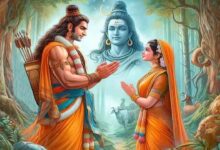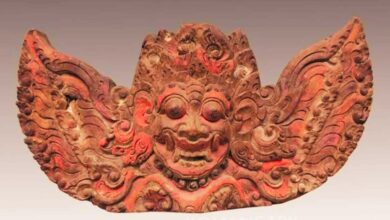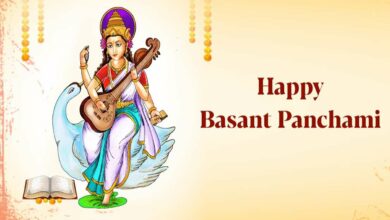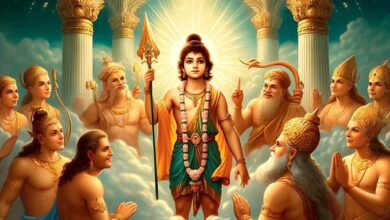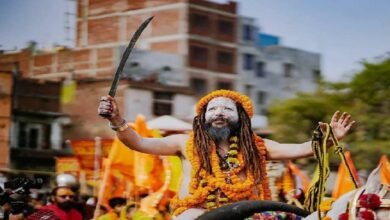A Place on Earth Where Kaliyuga Has Not Yet Entered – The Incomplete Char Dham Yatra Without It
Naimisharanya: Kaliyuga is in its second phase, and its influence is evident everywhere. However, in India, there is one sacred place where the effects of Kaliyuga have not yet reached. In today’s travelogue, we take you to this ancient pilgrimage site, which holds immense spiritual significance. Without visiting this holy land, the Char Dham Yatra is considered incomplete. This sacred site is regarded as the “Tirtha of Tirthas” (the holiest pilgrimage). It finds mention in various Hindu scriptures, including the Shrimad Bhagavat Mahapurana, Mahabharata, Vayu Purana, Vaman Purana, Padma Purana, Shiva Purana, Devi Bhagavat Purana, Yajurveda, Agni Purana, Garuda Purana, Skanda Purana, Vishnu Purana, Kalika Tantra, Karma Purana, Shakti Yamala Tantra, and Ramcharitmanas.
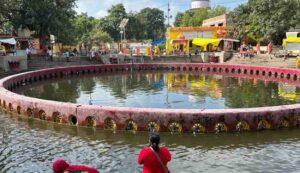
This is the very place where many great Hindu scriptures were composed. During the Mahabharata era, Yudhishthira and Arjuna also visited here. Moreover, in ancient times, 88,000 sages and ascetics performed intense penance at this site, earning it the name Tapobhumi (Land of Austerity). The earliest mention of Naimisharanya is found in the Yuddha Kanda of Valmiki Ramayana, where it is said that Lava and Kusha recited the Ramayana on the banks of the Gomti River during Lord Ram’s Ashwamedha Yajna.
Naimisharanya—The Sacred Pilgrimage Site
Located in the Sitapur district of Uttar Pradesh, Naimisharanya is one of the holiest Hindu pilgrimages. It is situated 80 kilometers from Lucknow, on the banks of the Gomti River. This place is also known as Naimish, Neemshar, or Naimisaranya. The word Naimish means Nimisha (a fraction of a second), and Aranya means forest, making it the forest of divine essence.
It is believed that Lord Brahma himself declared this place the best for meditation and penance. The main attractions of this place include:
- Chakratirtha
- Bhuteshwar Nath Temple
- Vyas Gaddi
- Havan Kund
- Lalita Devi Temple
- Panchprayag
- Shesh Temple
- Hanuman Garhi
- Shivala-Bhairav Ji Temple
- Panch Pandav Temple
- Panch Puran Temple
- Maa Anandamayi Ashram
- Nardanand Saraswati Ashram (Devpuri Temple)
- Ramanuj Kot
- Rudravarta
Chakratirtha—The Divine Waterbody
Chakratirtha is located about a mile from the Naimisharanya railway station. It is a large, circular water body where devotees take holy dips and perform circumambulations. Surrounding the pond are various temples, the most important being Bhuteshwar Mahadev Temple.
The Legend of Chakratirtha
A famous legend states that 88,000 sages approached Lord Brahma, requesting a sacred and peaceful place for penance. This event occurred after the Mahabharata war, and the sages were concerned about the onset of Kaliyuga. Lord Brahma created a divine chakra (disc) from his mind and instructed the sages to follow it. He told them that wherever the disc’s central hub (Nemi) would fall, that place would be the Earth’s spiritual center and free from Kaliyuga’s influence.
The chakra’s hub fell at this very location, which led to the site being named Naimisharanya, and the water body came to be known as Chakratirtha.
This sacred place is also known for the great sage Dadhichi, who sacrificed his bones to Lord Indra for making the powerful Vajra weapon to defeat the demon Vritra. It is believed that without visiting this holy land, all other pilgrimages remain incomplete.
The 84-Kos Parikrama of Naimisharanya
A unique feature of Naimisharanya is the 84-Kos Parikrama (circumambulation). This spiritual journey begins every year on the Pratipada Tithi after the Amavasya of the Phalguna month and continues until the full moon day.
Other Prominent Sites in Naimisharanya
Naimisharanya is home to many ancient temples and ashrams, including:
-
Vyas Shukdev Temple: This temple is dedicated to Maharishi Ved Vyas and his disciple Shukdev, who narrated the Shrimad Bhagavatam here. The temple also houses Vyas Gaddi, where Maharishi Ved Vyas composed the Mahabharata.
-
Dashashwamedh Tila: This temple has idols of Lord Krishna and the Pandavas, along with temples representing the four Char Dhams—Jagannath Dham, Badrinath Dham, Dwarka Dham, and Rameshwaram Dham. These temples were established by Maharishi Gopal Das.
Naimisharanya is not just a pilgrimage site; it is a place deeply rooted in Hindu mythology and spiritual history. The sacred aura of this land continues to attract devotees, sages, and spiritual seekers from all over India. Whether it’s the legendary Chakratirtha, the sacrifice of Sage Dadhichi, or the 84-Kos Parikrama, this place holds unparalleled religious significance.
For those on a Char Dham Yatra, a visit to Naimisharanya is essential to complete their spiritual journey. If you seek divine energy, peace, and spiritual awakening, this is the place to be!
FAQs
1. Why is Naimisharanya considered free from Kaliyuga’s influence?
It is believed that Lord Brahma himself designated this place as Kaliyuga-free when he created the divine chakra that landed here, making it the Earth’s sacred center.
2. What is the significance of Chakratirtha in Naimisharanya?
Chakratirtha is the central water body where Lord Brahma’s divine disc fell. It is considered one of the holiest places for Hindu devotees, who take ritual baths here.
3. What is the story behind Sage Dadhichi’s sacrifice in Naimisharanya?
Sage Dadhichi donated his bones to Indra to create the Vajra (thunderbolt weapon) to defeat the demon Vritra, symbolizing selflessness and sacrifice for the greater good.
4. How can one reach Naimisharanya?
Naimisharanya is located 80 km from Lucknow, Uttar Pradesh, and is accessible by road and rail. The nearest railway station is Naimisharanya station.
5. Is Naimisharanya a part of Char Dham Yatra?
While not officially part of the Char Dham Yatra, many believe that without visiting Naimisharanya, the pilgrimage remains incomplete. It is a significant spiritual site in Hinduism.

